We live between Belgium’s western border towns of Mons and Tournai and have been here for over a year, so it’s about time I wrote a quick info-guide to these places! Read on to learn about the history and must-see sites of Mons and Tournai, Belgium.
MONS
Mons is the capital of Hainaut province in Belgium’s Wallonia Region and has a population of almost 100,000 people. It is spread out over 57 square miles so the population is actually quite dense and urban. The city was settled long ago in the Neolithic period but Julius Caesar came in the 1st century BC and the area was settled by the Romans. Its name origins date back to the 7th century when Saint Ghislain and two of his disciples built a chapel dedicated to Saints Peter and Paul, on the hills where the great Sainte-Waudru de Mons church now stands. For many years the city was fortified, and the name Mons came from its original name, Montes, which referred to the small “mountain” the fortress was built on.

In August 1914, the Battle of Mons took place during WWI and was captured by the Germans for the next 50 months – until the Canadians liberated the city in November of 1918. This battle and period is commemorated today with plaques around the old part of the city. There was also a battle here in WWII called “Battle of the Mons Pocket,” where Allies took 25,000 German soldiers hostage. After the war, SHAPE [Supreme Headquarters Allied Powers Europe] was relocated to a village just outside of Mons as it provided a good central location for NATO military headquarters (basically like the Pentagon, but for NATO, which is located one hour away in Brussels). The Main Square in Mons has buildings (including city hall) that date back to the 1300’s. The architecture is distinctly Belgian, and can be seen in other places such as Brussels, Bruges, Antwerp, Leuven, Ghent and Tournai.
Grand Place
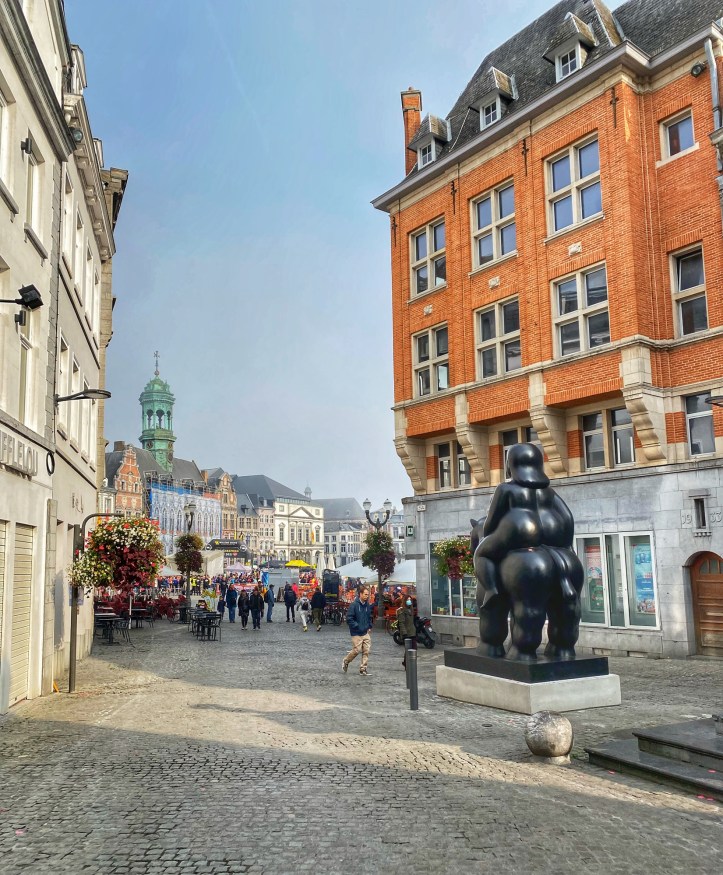
The Grand Place is situated in the historic town center of Mons. This main square is surrounded by iconic buildings such as the Hôtel de Ville, Théâtre and Orchestre Royale. The big open square has seating and a beautiful fountain, and often is the centerpiece of events such as festivals and marathons. Many restaurants surround the place and colorful streets stretch out from its center. Be sure to walk down Rue d’Havre (park here in the garage to be closest to the square) and check out Texas Coffee House, popular with the expat population here.
Keep in mind that many eateries are open for lunch, then close and don’t reopen for dinner until after 6PM, so plan accordingly! There are plenty of little grab-and-go places to get a waffle or fries as well. Walk down Rue de la Chaussée to shop and people watch, and we love grabbing poké at Surfside Poké Bowl too – it’s reliably good! Peek down Rue de Nimy, where the courthouse used to display the incredible living artwork “The Passenger” (see below). Finally, head up Rue des Clercs until you reach the next destination, Sainte Waudru Cathedral.


Check out the colorful streets and bustling square:





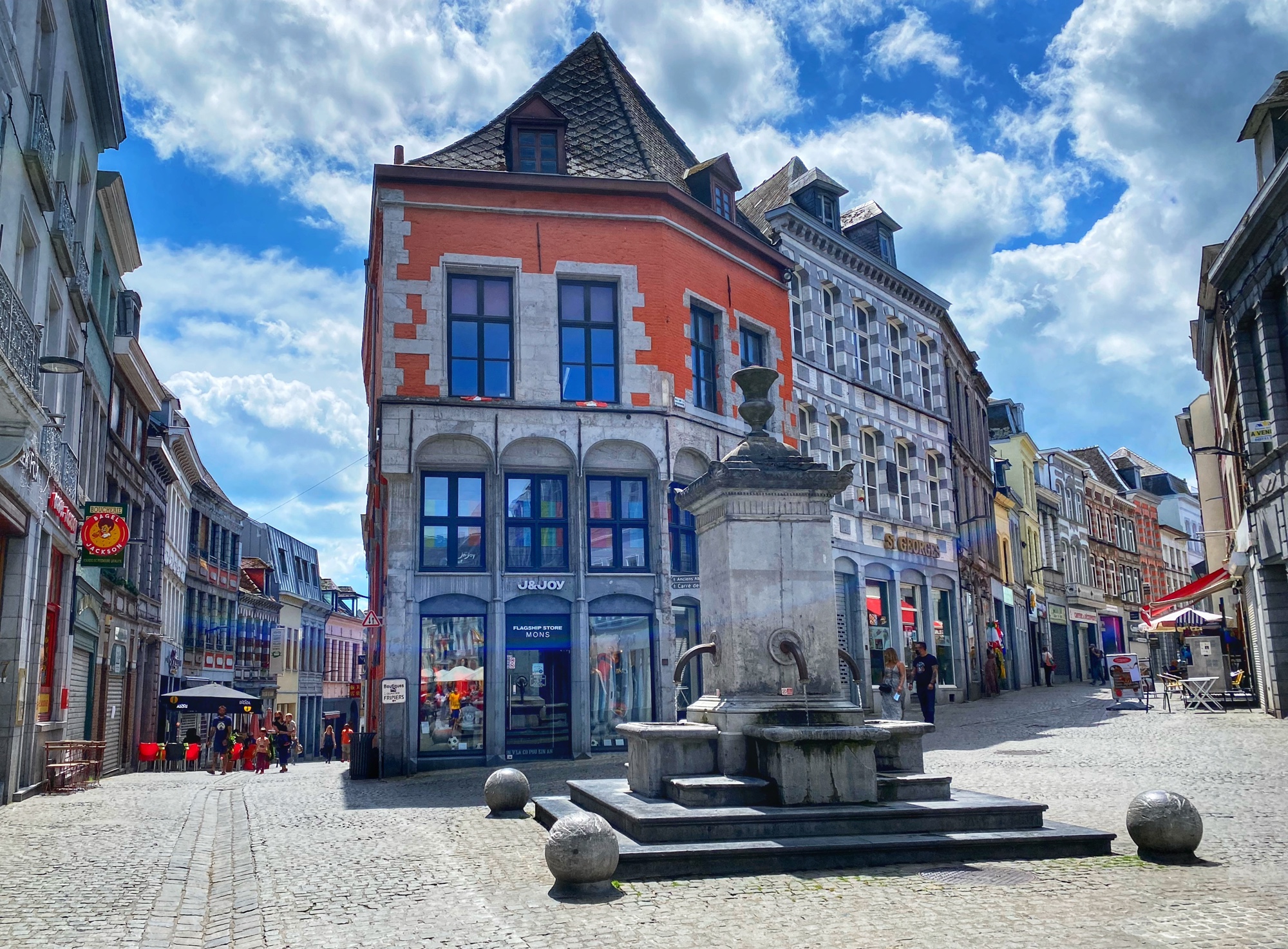
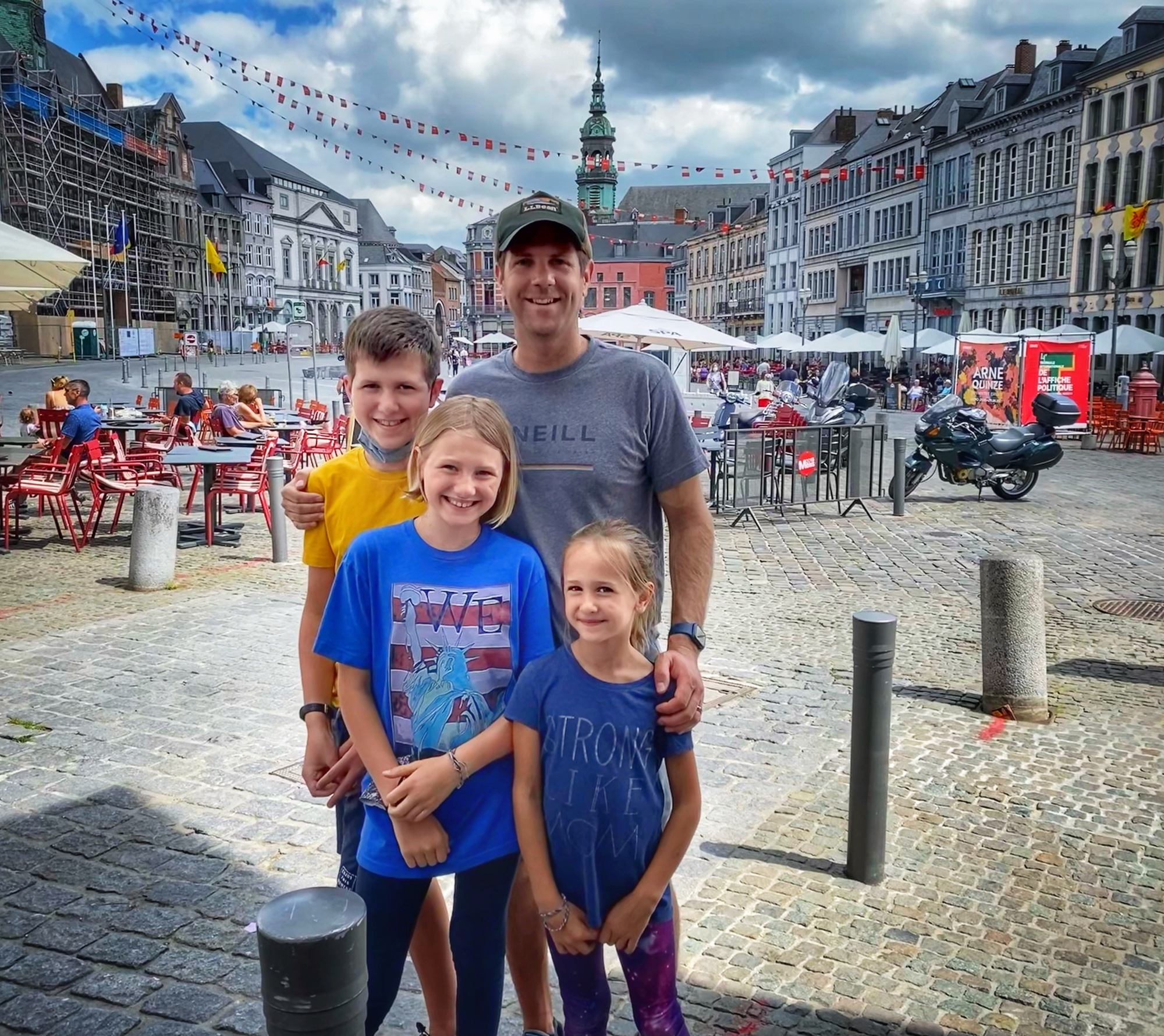


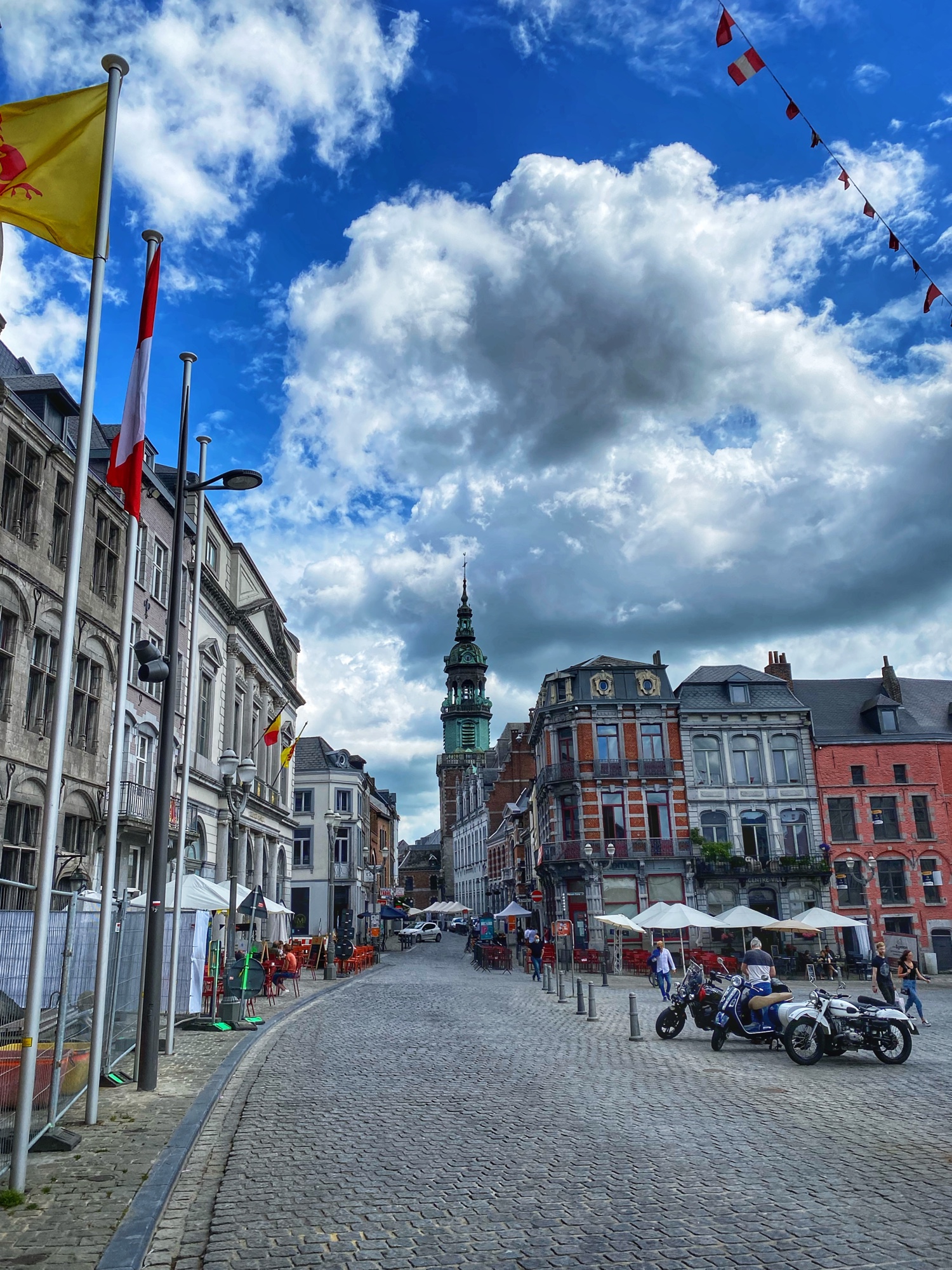


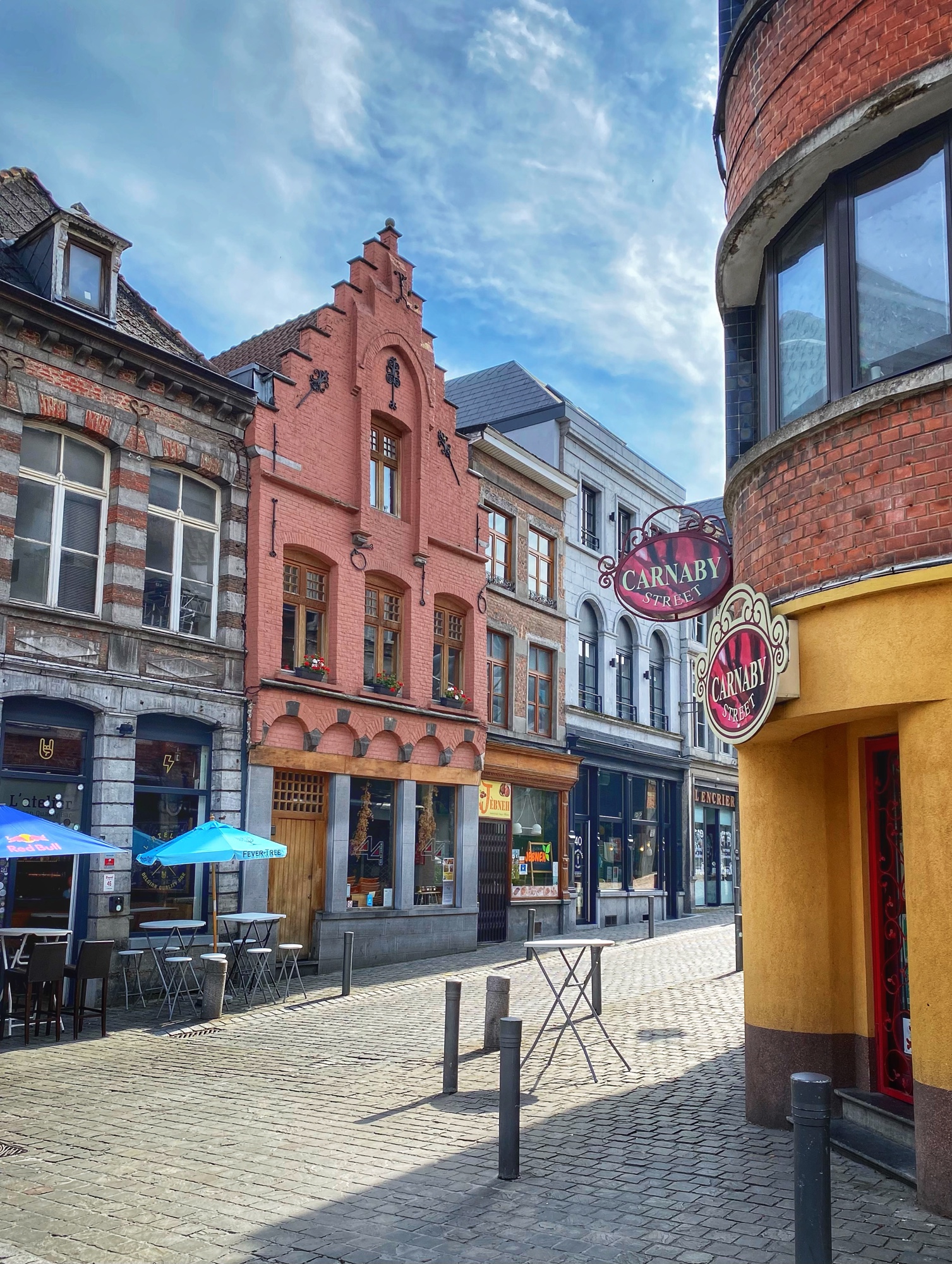
Before you walk to the cathedral, stop at the Hôtel de Ville to give the Mons Monkey a little pat on the head for good luck. Legend says the monkey will grant you one wish – although in the past it was just said to be good luck for pregnant women! So why not give it a try?
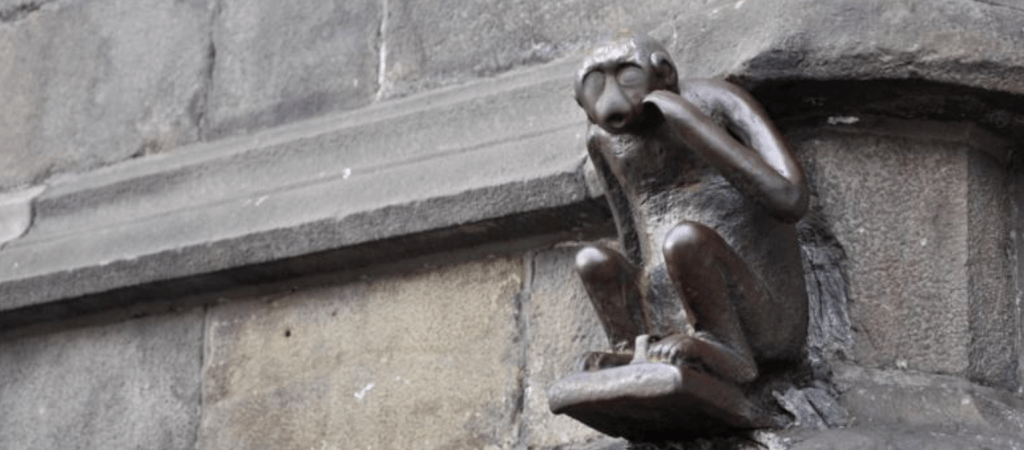
Sainte Waudru Cathedral
The great Sainte Waudru Collegiate Cathedral of Mons sits atop the hill as it did from its inception in the 7th century AD. Of course then it was a humble chapel erected by Saint Ghislain dedicated to Saints Peter and Paul, but today a grand Gothic cathedral stands proudly in its place. The current church broke ground in 1450 and was originally meant for the noblewomen of the community. The building was never completely finished, and we can assume from its appearance that towers were originally intended. Inside there is a lovely series of displays explaining the history and significance of various memorabilia, artwork and artifacts displayed in the church. Be sure to look up and down as you peruse the high-vaulted, haunting interior – there are many people buried underfoot, as evidenced by the stones engraved over their graves! Photos below of the church are from visitmons.co.uk.




It is hard to miss the gilded carriage (below) known as the Châsse de Sainte-Waudru. It is also plain to see the lines on the floor that have been worn over the years from the movement of the carriage during the annual DouDou celebration. From Visit Mons, “Marking the start of the Doudou, the descent of the Châsse de Sainte-Waudru takes place the night before Trinity Sunday as the clock strikes 8pm. In the Collegiate Church, packed with people, the relics of the city’s patron saint join mere mortals.” The ritual symbolizes the welcoming of the patron sait of Mons back home to be with the people. Sainte Waudru is known as the founding mother of Mons, as she supposedly saved the city from plague in the 1300’s. I have yet to witness this event but will keep an eye out this June!

Just outside the cathedral is Franklin Delano-Roosevelt square where lives Lucie et les Papillons. Sweet little Lucy cuts paper into butterflies, and is the image of the artist’s daughter. David Mesguich meant for this sculpture to symbolize the ephemerality and fragility of feelings and objects in current times. It is true that times, emotions, thoughts, and objects are fleeting…


Mons Belfry
Not far from the cathedral and adjacent to the City Park (Parc du Château) is the baroque Beffroi de Mons. This tower belfry was bulit in the 1600’s and is a UNESCO site. Visiting the belfry is a must to appreciate the landscape, history and culture of Mons. Learn more about the Mons Belfry here.

Maison Van Gogh
Finally, and perhaps most iconic, is the Van Gogh House. The Maison Van Gogh was the home of Vincent Van Gogh early in his career, and the exhibits today take the visitor on a journey through his early works and experiences living in Mons. Learn more about “where Van Gogh became a painter” here.
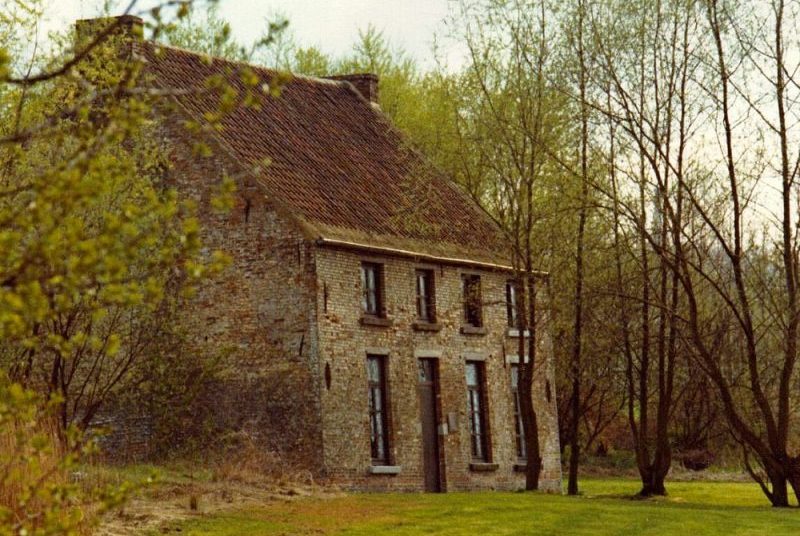
The Passenger
Although The Passenger no longer exists (it was removed in 2021 after 5 years), it is worth sharing to demonstrate how dedicated the city of Mons is to art and culture. The beautiful and massive work of art cost $400K to build out of reclaimed wood and stretched an entire city block. “The Passenger” by artist Arne Quinze symbolises the flow of people and their cultural evolution occupying the Rue de Nimy’s since its origin in the 13th century. Learn more about this instillation and others by Arne Quinze here.
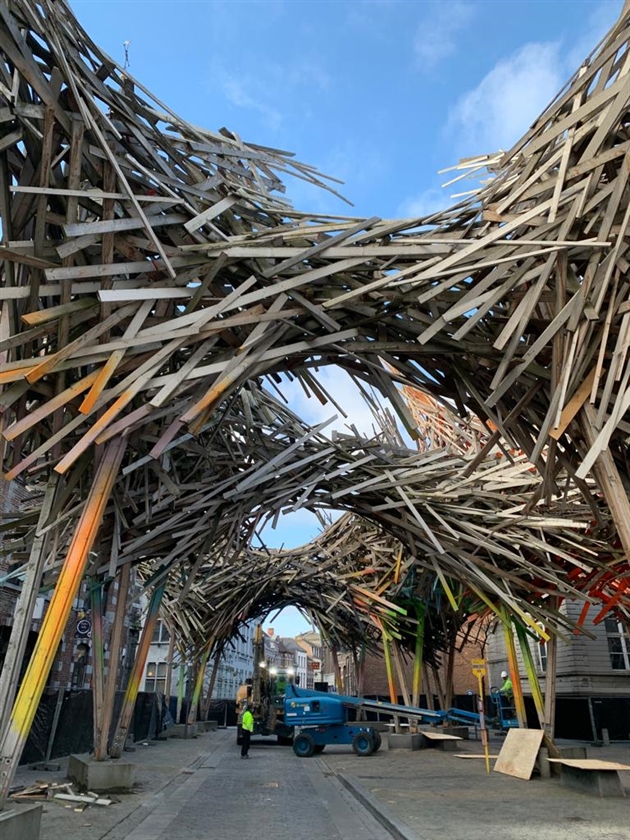
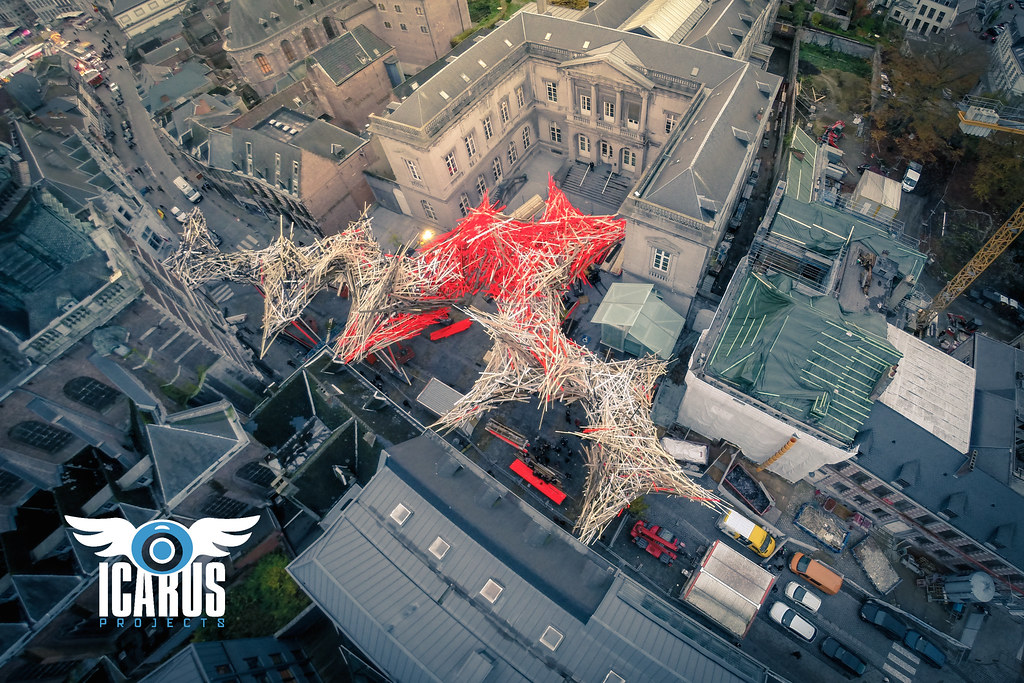

NOTEWORTHY PLACES
Mons is a great town steeped in history and packed with culture and flair. Here are a few other things to look for in Mons if you’re here for more than a day!
- Mons Farmer’s Market (Vieux Marché de Mons) 7AM-mid day Sundays
- Mons Memorial Museum (dedicated to the two world wars)
- Artothèque (art museum)
- DouDou Museum (all about the Ducasse de Mons celebration, immersive)
- Explore Neolithic Flint Mines of Spiennes (UNESCO World Heritage Site)
- Visit Château d’Havré
- Climb the Slag Heaps (Terril de l’Héribus)
- Explore nearby Boussu Castle Park or Jemappes Park
- Visit The Grand Hornu Museum (UNESCO site)
- Mons Christmas Market and Lights (during the holidays)
TOURNAI

Tournai, Belgium is located on the northwest border of Belgium, not far from the city of Lille in France. With a population of around 70,000 people, it packs a great deal of history into a relatively small area in the city center. If I could define a Belgian “style” to the architecture and vibe of a place, Tournai nails it! The buildings are colorful and boast the triangular stair-step faux-facade that can be found in other prominent Belgian cities. There are statues, towers and cathedral spires in all directions.
HISTORY Along with Arlon and Tongres, Tournai is one of the oldest cities in Belgium. Tournai was once the capitol of the Frankish Empire in northern Gaul during the mid 5th century AD. In the late 10th century, it became part of France, until 1513 when it was captured by England and was briefly ruled by Henry VIII until it was handed back to France in 1519, thus making Tournai the only current Belgian city to have a history of British rule. It is unique in that it has had Belgian, French, Dutch, Spanish, British, and Austro-Hungarian rule over the course of 1,000 years between 843-1830. It has remained a Belgian city since 1830, when Belgium finally became an official country.
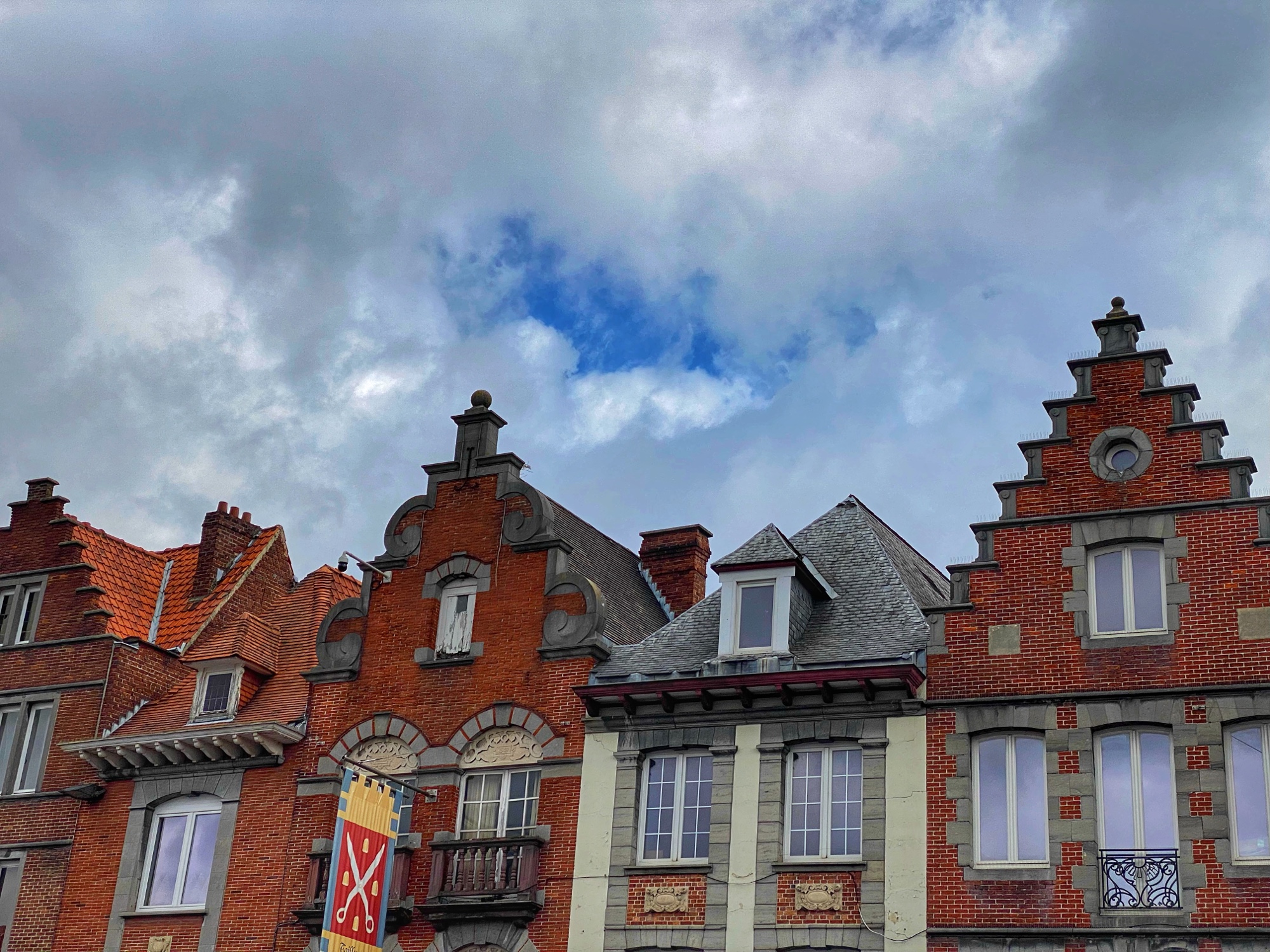
CULTURE Tournai is known for greatness in textiles and tapestry, as well as painting, and long standing traditions. One such tradition is the Great Procession, which has taken place every single year in Tournai since 1092! During this event held on the second Sunday in September, people of the church carry a golden chamber through the streets in honor of Our Flemish Lady as a testament to the loyalty of the people of Tournai. The tradition began during a plague epidemic and has been a symbol of Tournai pride, harmony and reconciliation. Additional traditions include “Lost Monday” (the first Monday after January 6th, dating back 700 years) when residents feast together in large groups and often eat rabbit. Carnival (Mardi Gras) also happens here, as well as two great week-long fairs held in May and September. Tournai also has a small Christmas Market during the holidays.
Two UNESCO World Heritage Sites tower over the city and are symbols of Tournai. The Belfry of Tournai (1188, oldest in Belgium) and Cathédrale Notre Dame de Tournai both date back to the 12th century and are classic examples of Romanesque and Gothic architecture. These must-see landmarks and more are detailed below.
Grand Place
The first stop on a visit to the city has to be the Grand Place. From here you can appreciate the colorful architecture, cobblestone streets, and iconic towers of Tournai. It is here in the Grand Place where you can find markets and festivals, and there are lots of eateries and shops surrounding the square. Walk down the wide Grand’Place street to peruse until you reach Place de Lille, then double back. Back at Grand Place you can walk down Rue des Orfèvres to the cathedral, along Rue du Vieux Marché, and end up at the belfry. Also walk up Rue Saint Martin towards the museums and search for Queen Astrid Park.




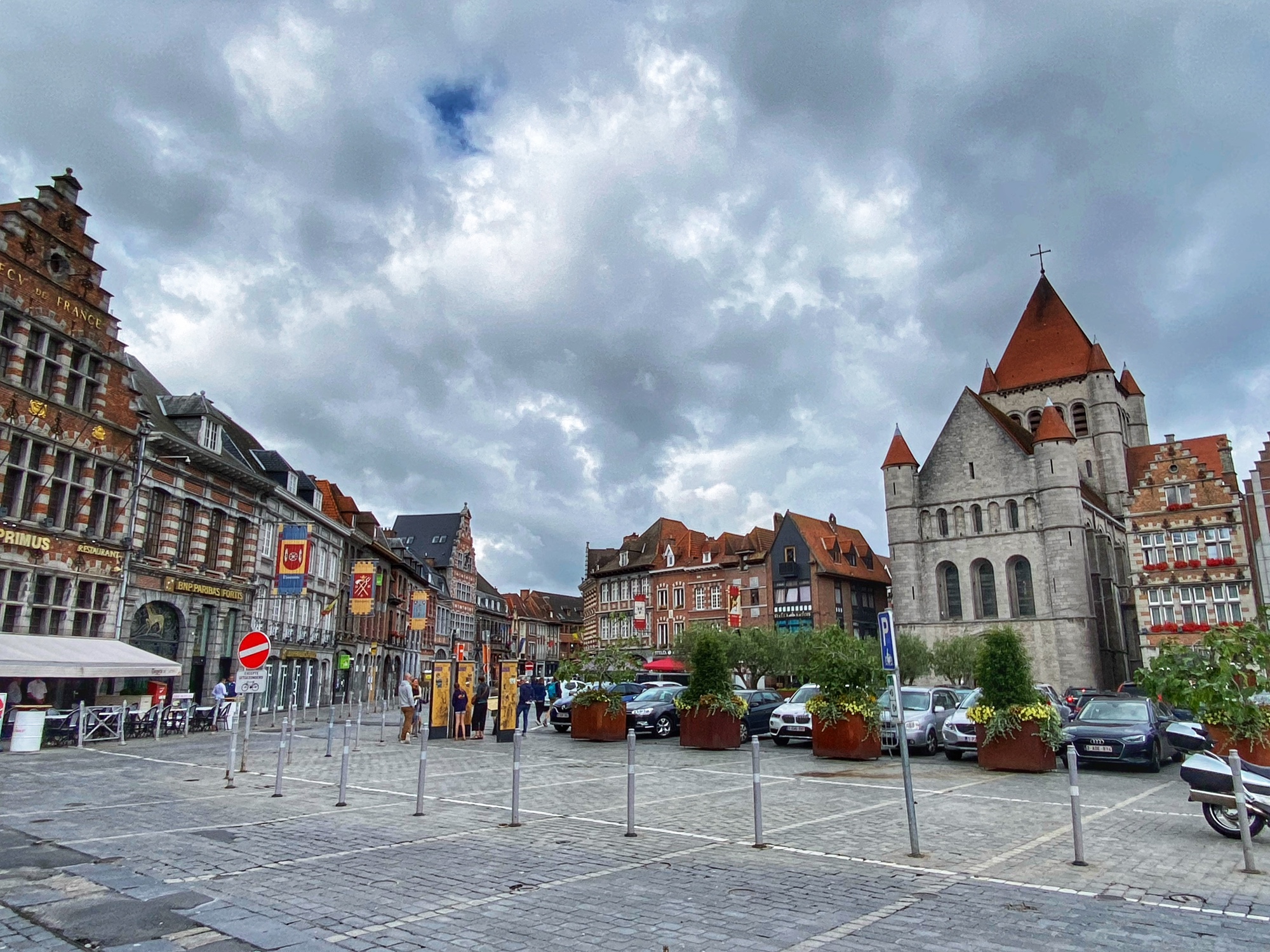
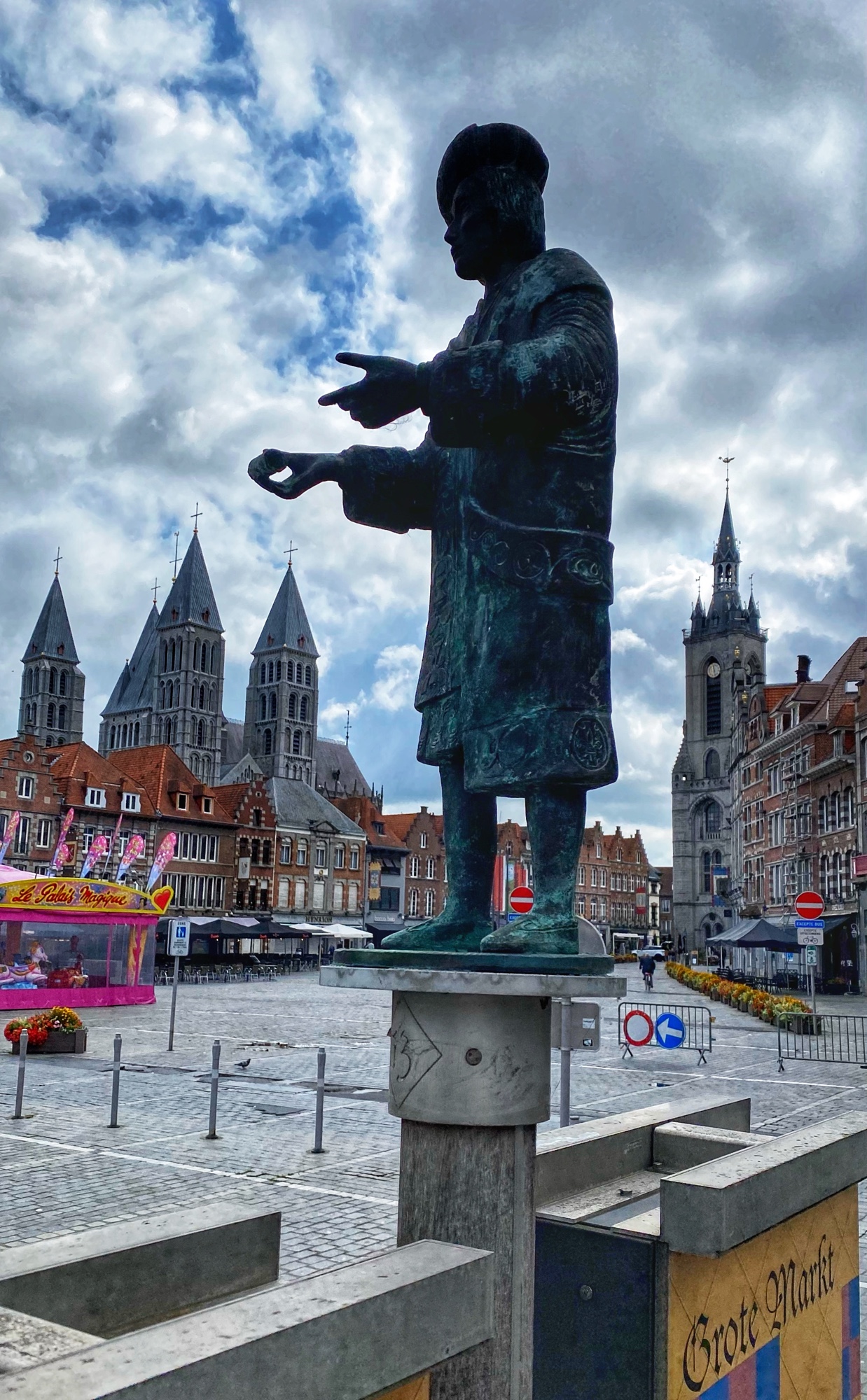
I would love to try those meringues at La Palais des Meringues (below) and the donuts from another shop nearby called Dreams Donuts that look divine! Also, I would love to learn more about the flags displayed at L’Imperatrice (The Empress, below) as one of them looks a lot like one of the American confederate flags – but I don’t think it shares the same symbolism…



Church of Saint Quentin is a Romanesque Style church that can’t be missed on the northwest side of the main square. This medieval church is a centerpiece of the Grand Place; first noted in the 900’s, the current building was erected in the 1200’s. The church has been damaged and reconstructed several times throughout history, most recently after WWII in the 1940-60’s. It is just such a unique site – it struck me as something that didn’t fit in with its surroundings.
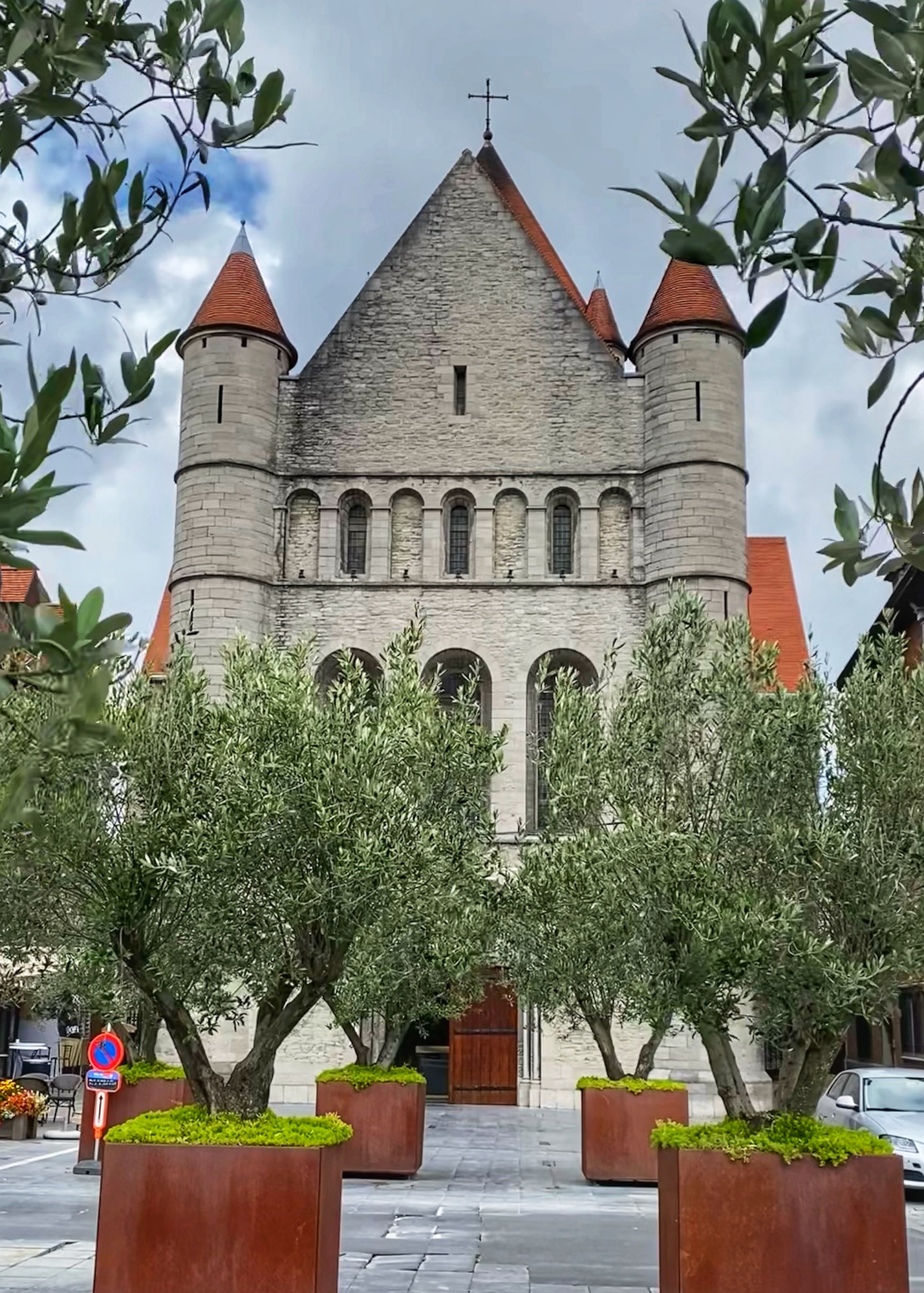
Cathédrale Notre-Dame de Tournai
This great cathedral gave the city its nickname: Five Towers. It is enduring a rigorous reconstruction and rejuvenation at the moment which makes it difficult to view thoroughly, but it is still worth stopping in to get a peek and learn a little bit more about the great historic UNESCO World Heritage site. Our Lady (Notre Dame) may be covered in scaffolding, but you can still view the exhibition “Visible, invisible, the cathedral illustrated. 100 meters of history.” It presents Notre-Dame Cathedral, its history, its role in the city, its architecture, its treasures, and the restoration site.
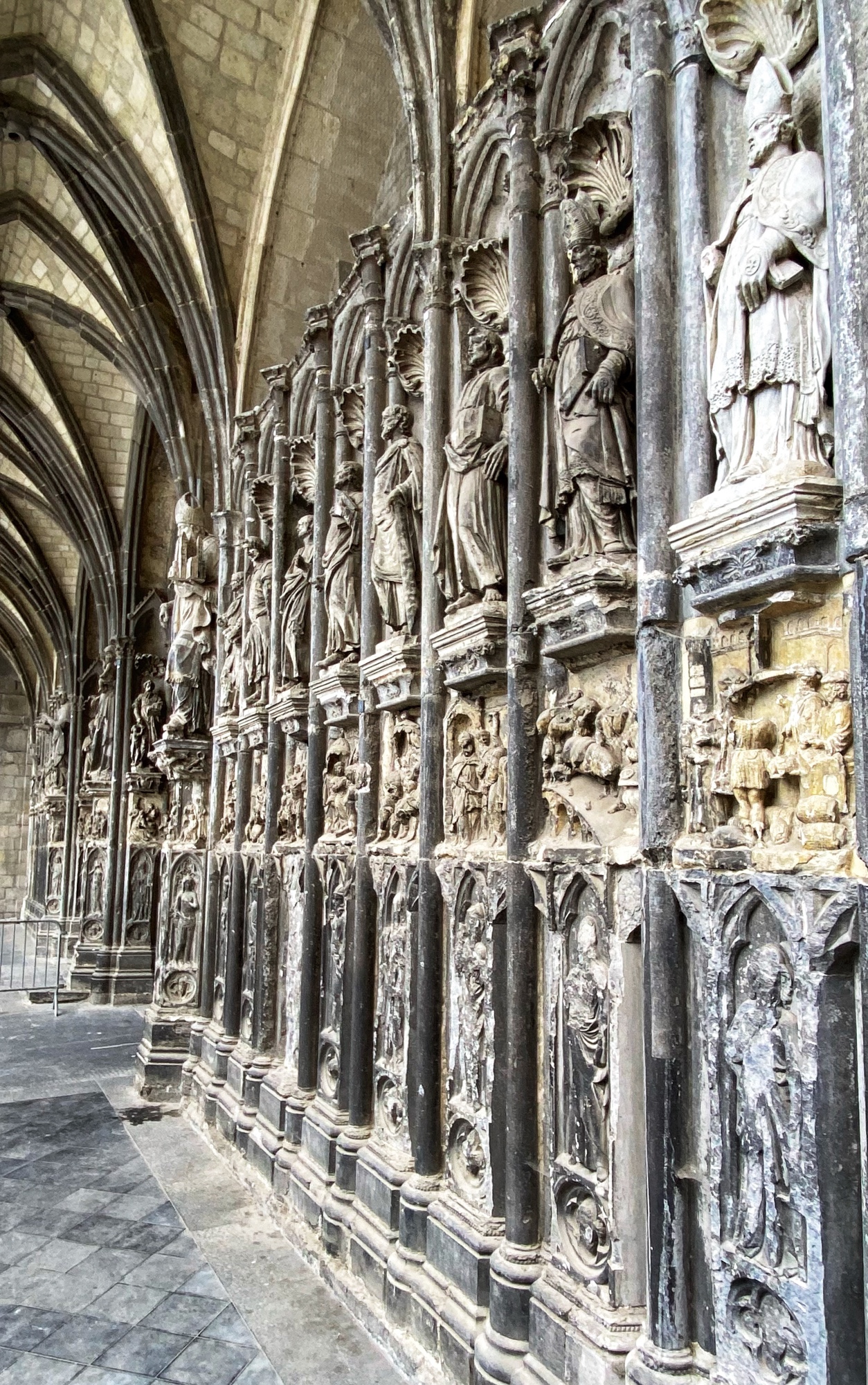



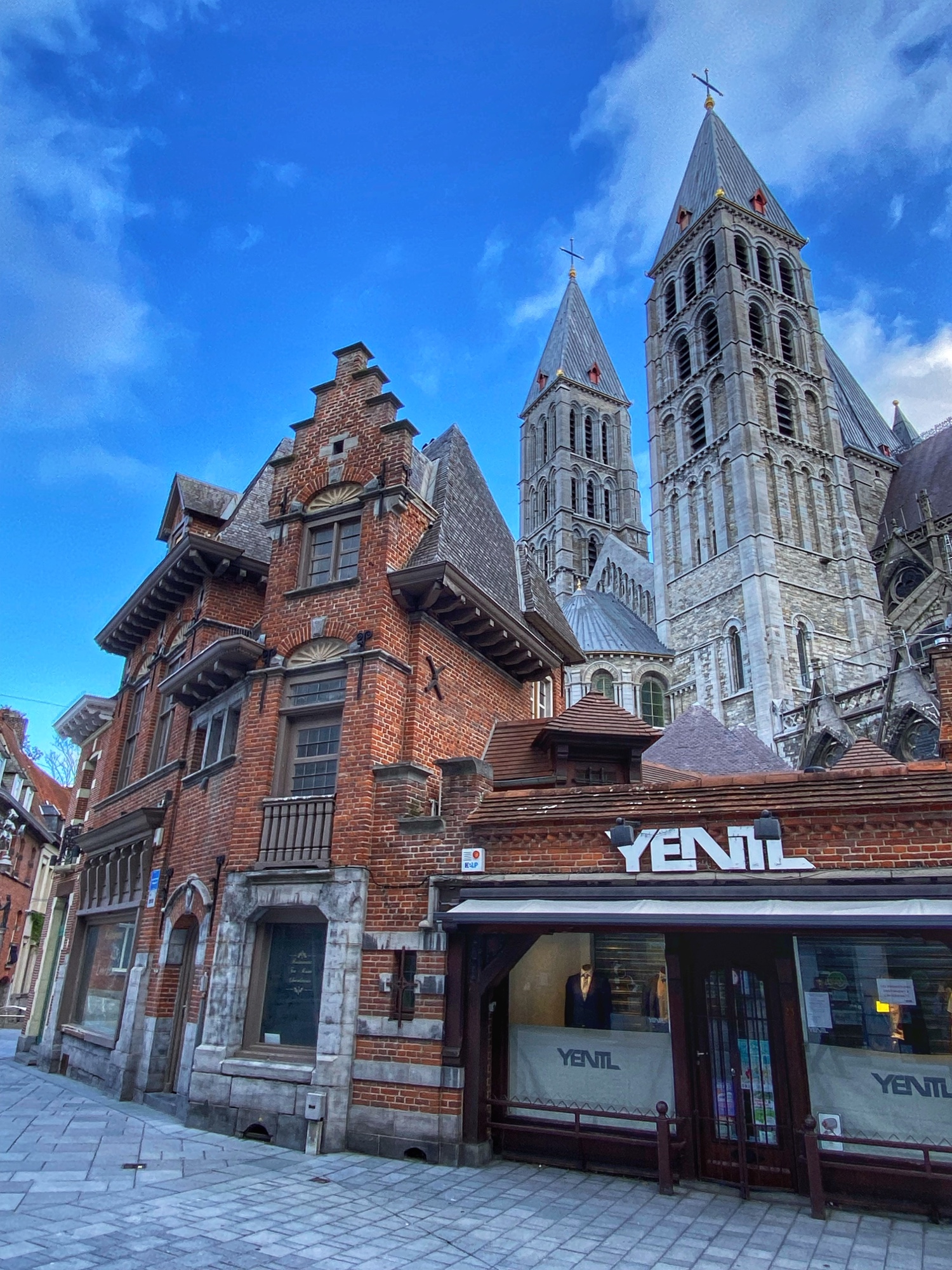
Belfry of Tournai
Like its sister towers at the cathedral, the Belfry of Tournai stands proudly in the center of town. Typically you can ascend the 257 steps to the top of the tower but at the moment it is temporarily closed for safety reasons. According to the Tournai tourism website, the tower was originally built to symbolize communal freedoms. It rang “its bell, the Bancloque, to warn the population of trials and executions, invasions, fires.” The belfry served as a watchtower, prison, bell tower and town hall. Today, when it reopens, visitors can enjoy exhibits, a dungeon, a carillonneur’s room, and the best view over the city of Tournai from its summit.
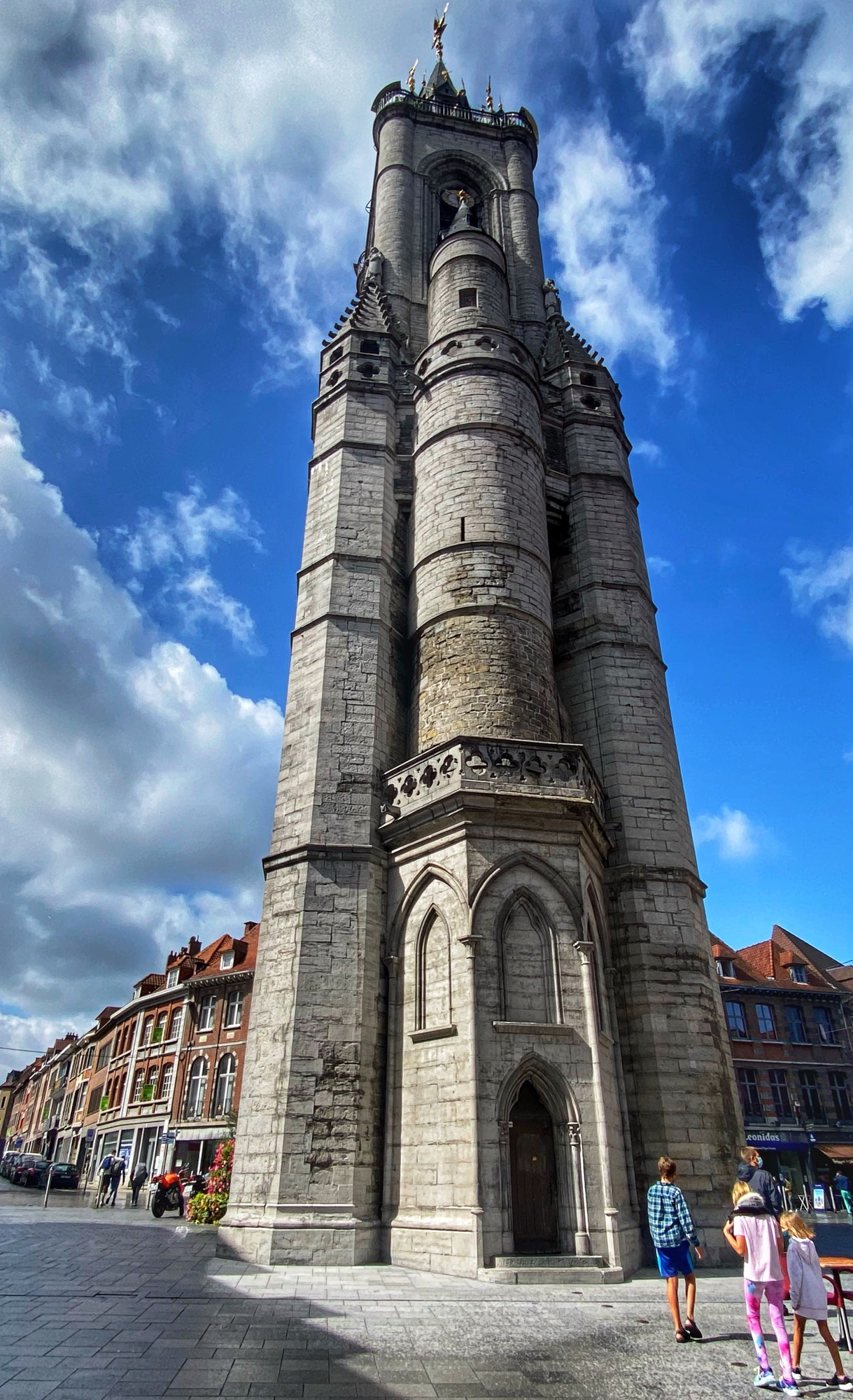
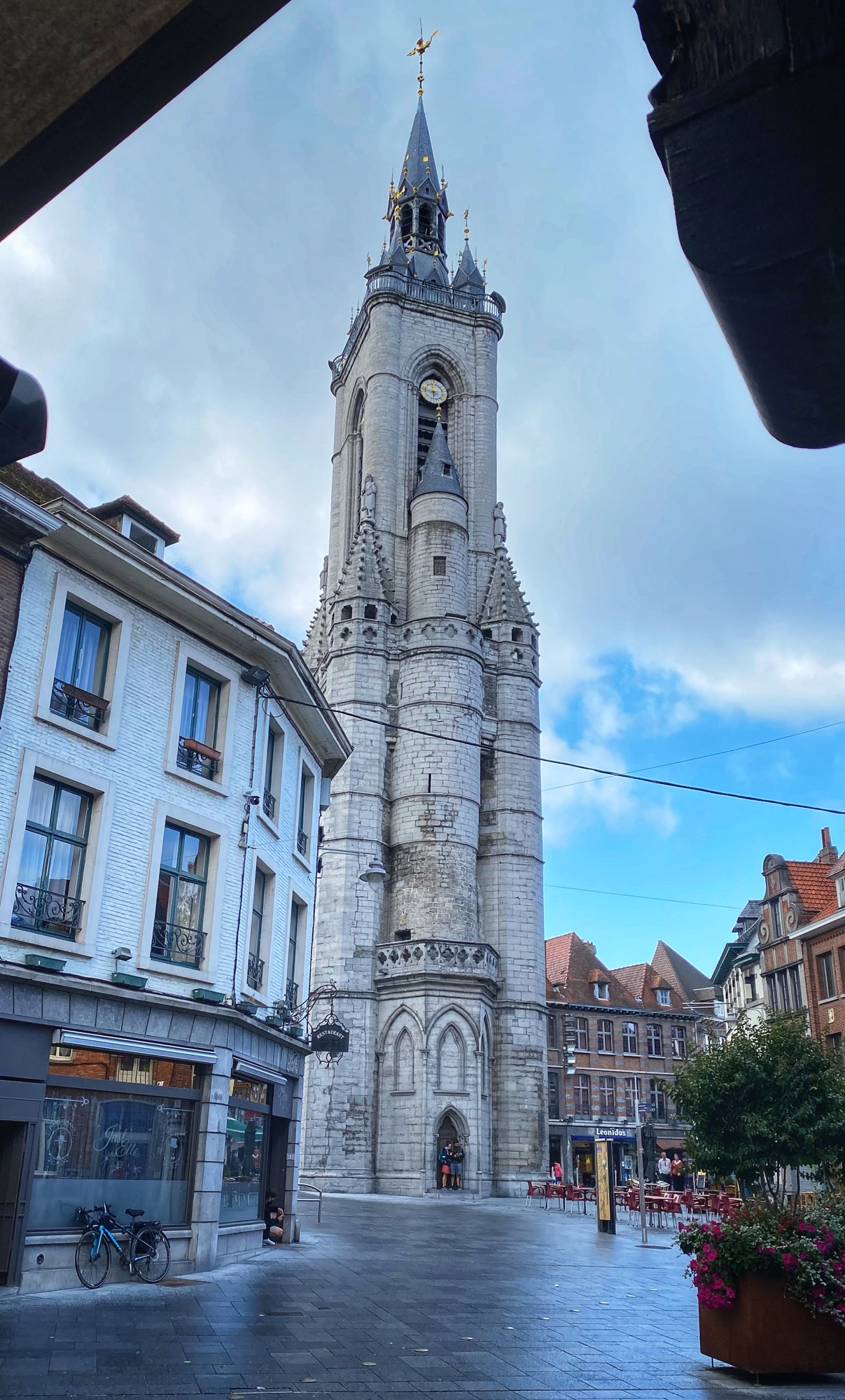
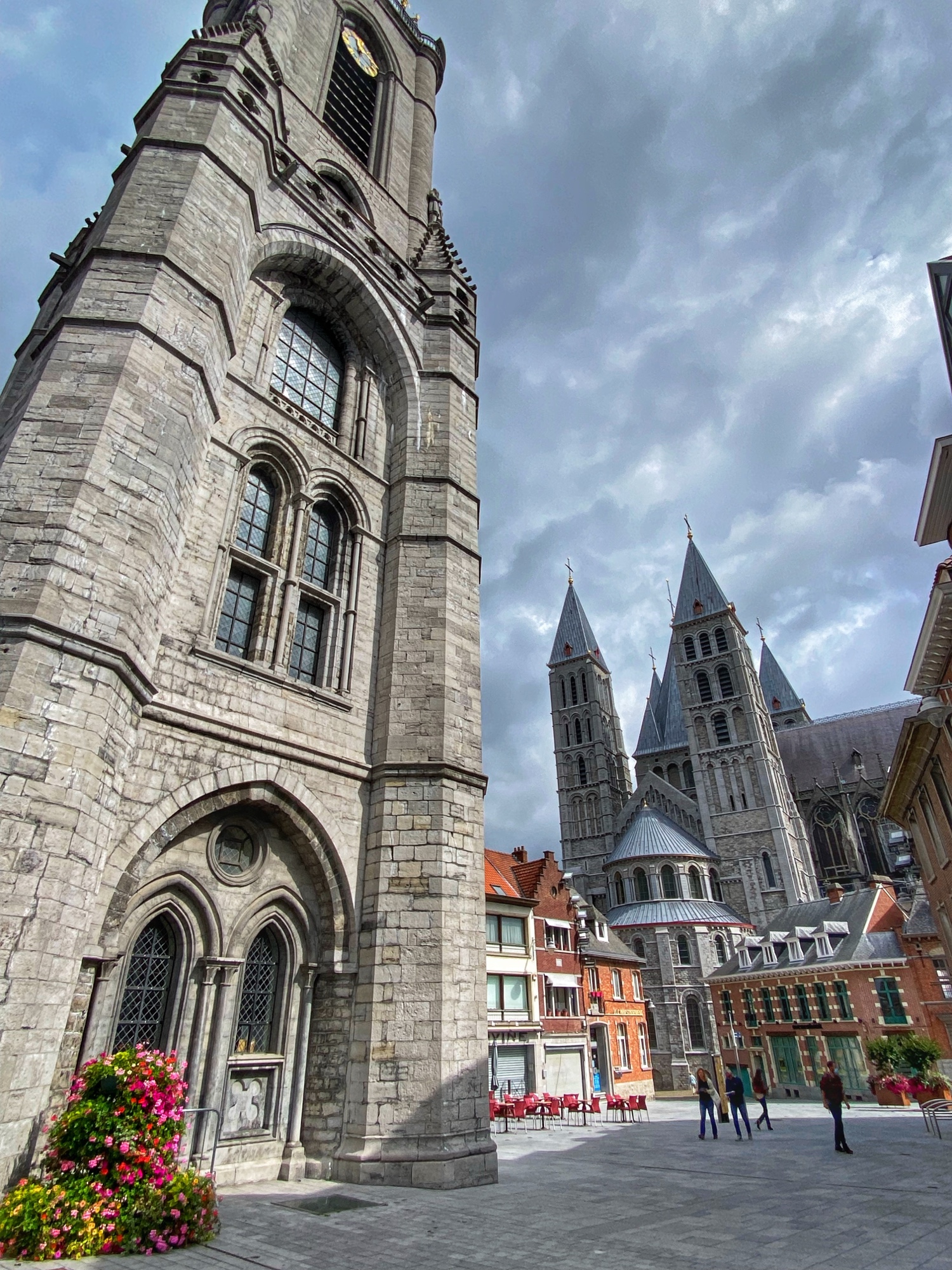
Museums
Are you a museum lover? Tournai has a great variety of small museums to visit in the city limits – you can see several in a day! Each has a small fee to enter (usually between €5-10) and you do not need reservations. Just look before you go at opening times.
Tapestry Museum
Bring the whole family and learn about the great history of tapestry making in Tournai. Participate in the “lab,” play and make your own creation! Be sure to request the “discovery notebook” at the reception desk for your kiddos. Children under age 18 are free, and adults are €5. For more information click here.
Natural History Museum
This is the very first museum of Belgium! Opened in 1828, it now boasts many exhibits, animals, and a living vivarium where fish, tarantulas, amphibians and reptiles live in reconstituted habitats. Take note that the museum is open for morning and afternoon hours and is closed for lunch. Learn more about it here.
Military History Museum
Learn about the many sieges the city has survived here at the Military History Museum, as well as the highlighted battles from WWI and WWII. Closed on Tuesday and Sundays, this museum is also closed at lunch time so plan around morning and afternoon visits. Learn more about it here.
Maison Tournaisienne (Museum of Folklore)
Take a walk through this whimsical museum of folklore to see memorabilia dating back hundreds of years – representing the rich and the poor, artisans, and local workers. Like the other museums, it is closed during lunch time, Tuesday and Sundays. Even if you don’t go inside, the exterior of this museum is lovely! Learn more here.
Tournai Archaeological Museum
Closed at lunch and on Tuesdays but open on Sundays, this museum is free the first Sunday of every month! Archaeological finds from the area are displayed here, and there are many from Tournai’s illustrious history! Learn more here.
Museum of Fine Arts
A brilliant local collection of paintings, sculptures, photography and various other pieces from the 15th-20th centuries. Learn more here.
Markets
Are you a lover of local markets? Come check out the weekly ones in Tournai!
Thursday : place Crombez (food/non-food) 8AM-1PM
Friday: place PE Janson (farmer’s market) 4PM-8PM
Saturday: Grand-Place (food/non-food), Place de Lille & Place Crombez (food) 8AM-1PM
NOTEWORTHY PLACES
- Pont des Trous Bridge: Visit this iconic “bridge of holes” over the Scheldt river on the north side of town. It dates back to 1200’s!
- Église Saint-Jacques de Tournai: A lesser known church in town, tucked away on back streets, this Catholic church is still worth a visit! It was built between the 12th-14th centuries.
- Hôtel de Ville: This city hall building used to be a monastery – its history goes back to the 11th century! Look for it across from the Museum of Fine Arts.
- Maisons des Jésuites: Walk by this historic group of buildings on the Rue des Jésuites that date back to the 13th century.
- La Halle aux Draps: Another historic building to view in the Grand Place, this hall used to house draperies and tapestries but today is an exhibition and event space. The building dates back to the 13th century, but was refurbished in the 1600’s to what we see today.
- Jungle City: Just outside the city center there is a great place for kids (ages 0-13) to explore! It has wonderful places to play, climb, and have a great time. Learn more here.
So, whether you are visiting for the day or live here, whether you’re a history buff or just like pretty scenery, and whether you’re alone or with your family, there is much to do and see in Mons and Tournai, Belgium!
NOTE: I am committed to providing free, valuable travel info. If this add-free guide is helpful to you and you’d like to show your appreciation, buy me a coffee! Thank you!
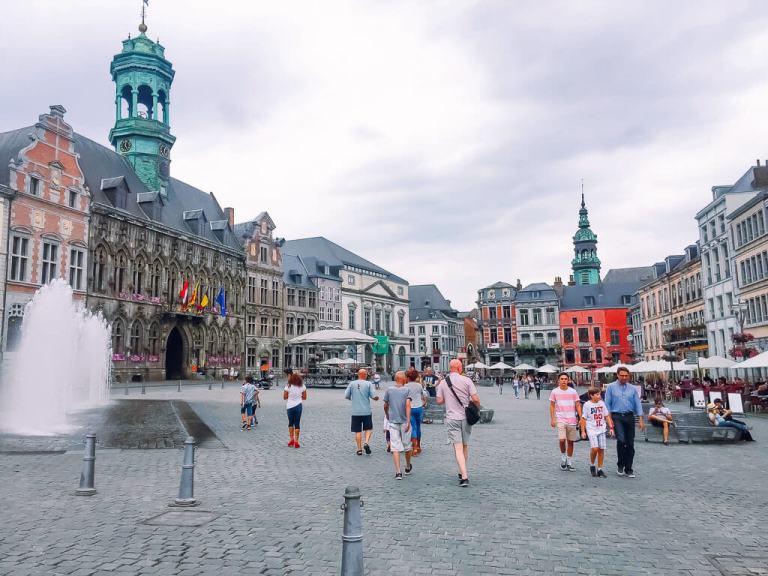
I couldn’t love these posts any more than I do!!!
Sent from my iPhone
>
LikeLiked by 1 person
It means so much to me Cam, thank you! And I love that you know these places and can re-live your time here just a little bit! ❤️
LikeLike
[…] With all the amazing Christmas markets at our fingertips in Europe, it’s easy to overlook the festivities right in our backyard. The Grand Place in Mons transforms into a lovely, festive market during the holidays known as the Coeur de Neige, and boasts great beverages (of course), classic sweet treats, and gifts. I was not especially impressed with the food options here, but it is different every year. The decoration is bright and glowy with a huge Christmas pyramid as the centerpiece. There are a couple of rides and it is possible to meet “Father and Mother Christmas” in one of the special areas, so keep an eye on the schedule for times. Check out my mini guide to Mons here. […]
LikeLike